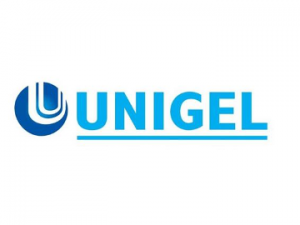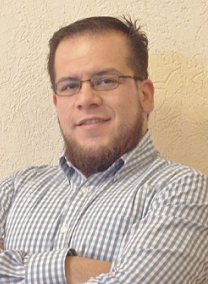
In this new era of business, companies are constantly searching for new markets where they can make investments to expand their business and for a better positioning for their brands. This search is the best strategy for a company in a globalised world. Competition is very strong and coverage of most markets is the only way to survive. One of the most attractive markets for business is Latin America, since the workforce is highly skilled, inexpensive and emerging economies are looking to attract more investment to their country. A clear example of a country in Latin America, that is very attractive to investors, is Mexico. During 2012, Mexico ranked fourth as an exporter of light vehicles, such as compact cars and SUV’s. In 2013, the Japanese manufacturer Mazda began the construction of its plant in Salamanca, Guanajuato and started mass producing vehicles in January 2014. Later that year, other car manufacturers made it their intention to enter into the Mexican market by building vehicle and auto parts manufacturing plants. A couple of months ago, the figure for investment in the country reached an amount of over $800 million and companies like Hyundai, Honda, Renault-Nissan (as a joint venture), Mercedes Benz, Audi and BMW are the protagonists of this injection of capital into Mexico.
All of these announcements from the car manufacturing sector is a clear example that more and more companies are now interacting with customers and suppliers from countries like the United States, India, Mexico, Taiwan, Chile and Brazil. All of this involves having good management of cash flow in order to face operations that deal with foreign currencies and therefore, closely monitor currency fluctuations, as it is at this point, where the skill, experience and expertise of financial personnel in each company must be noted. The personnel in charge of finance play an important role in making decisions that we face every day. Capital investment makes large amounts of money for the company, which brings new challenges in managing monetary resources of each company. The personnel in charge of making these decisions must have the ability to develop financing options in order to help maintain adequate levels of cash flow to give continuity to the business operations, while facing new investment opportunities. A clear example is seen in the economic impact that has arisen from exchange rate fluctuations of major currencies that are used in international operations, such as the Dollar, Euro and its parity with the Mexican Peso. This fluctuation between currencies has generated exchange rate movements that could define the solvency of any company.
It is quite important to identify the company’s functional currency, when foreign currency transactions take place. The functional currency is the currency that controls most operations of money, so if the majority of transactions are conducted in dollars, the functional currency is this. Once the functional currency is determined, projections of cash flows are needed so that business and future obligations can be met which will help us to check if we will have to buy or sell currencies. In addition to this, we must analyse the instability of currencies and assess the possibility of hiring a hedge against currency fluctuations. This will allow us to manage our average cash balances and therefore know what should be the minimum amount of money that must be available within the company. This amount will need to be monitored to maintain the minimum required and not put the business’ continuous operations at risk. Once the functional currency has been identified and the minimum amounts of cash balance has been determined, the next step is to make cash flow projections for the company, which is to determine present and future obligations of performance. It is also necessary to identify the incoming money, either by the operation itself or acquisition of financing, according to chronology of the investment project.
Once the above is done, we can evaluate hiring a financial instrument to help us minimise the economic effects of exchange currency fluctuation. Today’s economic environment can be very variable so we must analyse at what point we will require other currencies to meet the expenses generated by the project. In the future, the exchange rate can be an important factor in investment decisions, so when these considerations are not apparent, estimated investment can become so large that a project may not be viable. For this we can hire a product that gives us assurance to make the investment in the project without having an effect on currency fluctuations in the future. This type of instrument is called “Instruments of Coverage” and the most common used is called the “Forward Rate Agreement (FRA)”. Many banks and large corporations are using FRAs to hedge exchange rate exposure, to determine better strategies in the creation of cash flow projection and are always looking to cover the risk related to exchange rates. Financial personnel assess this kind of instrument to minimise one of the risks where investment is exposed and even when the FRAs are a tailor-made to suit this kind of agreement, they have to be evaluated very carefully. The company must keep in mind that the goal is not to set a low exchange rate, but to have a fixed exchange rate and to help us provide assurance that the investment decision will make no significant economic impact and will achieve better planning and resource management.
In investment projects, it is important to be aware of when resources are available for implementation and therefore assess the need for investment instruments on the cash flow surplus of the company. It is easier to evaluate the investment vehicles that suit the company because they are very safe instruments with a low yield. The greater risk you have, the higher yield you will get, and the lower risk you want, the lower yield you will have.
As a conclusion, management of cash flow and its surplus is vast. Nowadays, financial institutions have a wide range of products and a portfolio of financial services that may be very helpful when making decisions. This work must be done with courage so that the best decision is made and it can contribute to the greater benefit of the investment project.
 Miguel Angel Rodríguez Carbajal is the Corporate Treasury Manager at Unigel Mexico and is responsible for treasury management of the Mexican Group, as well as financial planning. He graduated as a public accountant from the National Polytechnic Institute (IPN by its Spanish acronym) in Mexico City. Before joining Unigel, Miguel worked at PriceWaterhouseCoopers (PwC) in Mexico, where he gained experience in the petrochemical and manufacturing industry, tourism, government, healthcare, law and the Chambers of Commerce. Miguel has a strong interest in financial planning, as well as business management.
Miguel Angel Rodríguez Carbajal is the Corporate Treasury Manager at Unigel Mexico and is responsible for treasury management of the Mexican Group, as well as financial planning. He graduated as a public accountant from the National Polytechnic Institute (IPN by its Spanish acronym) in Mexico City. Before joining Unigel, Miguel worked at PriceWaterhouseCoopers (PwC) in Mexico, where he gained experience in the petrochemical and manufacturing industry, tourism, government, healthcare, law and the Chambers of Commerce. Miguel has a strong interest in financial planning, as well as business management.







